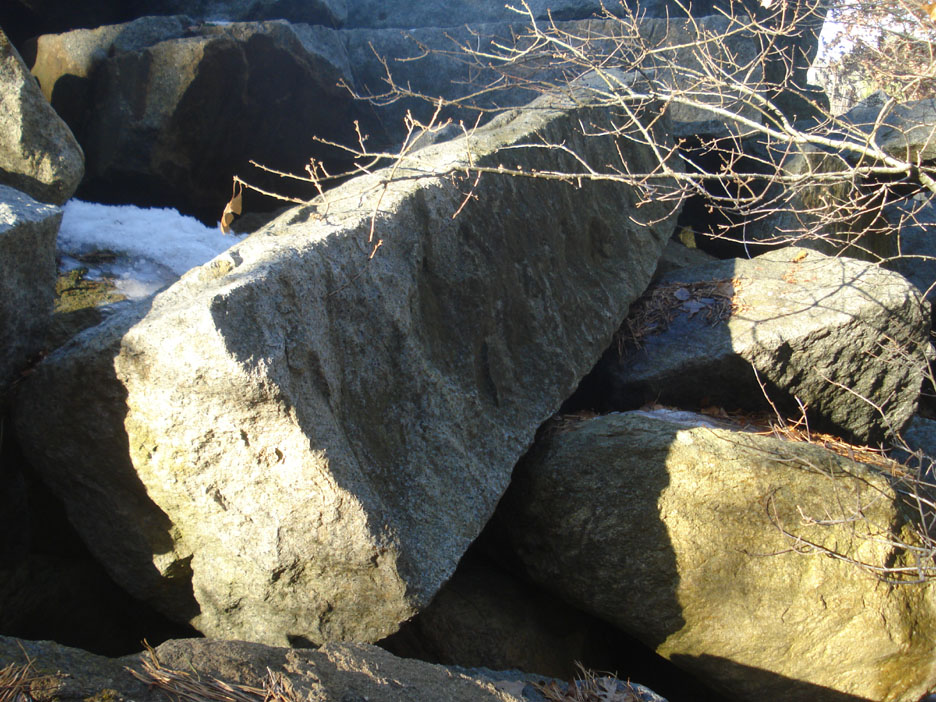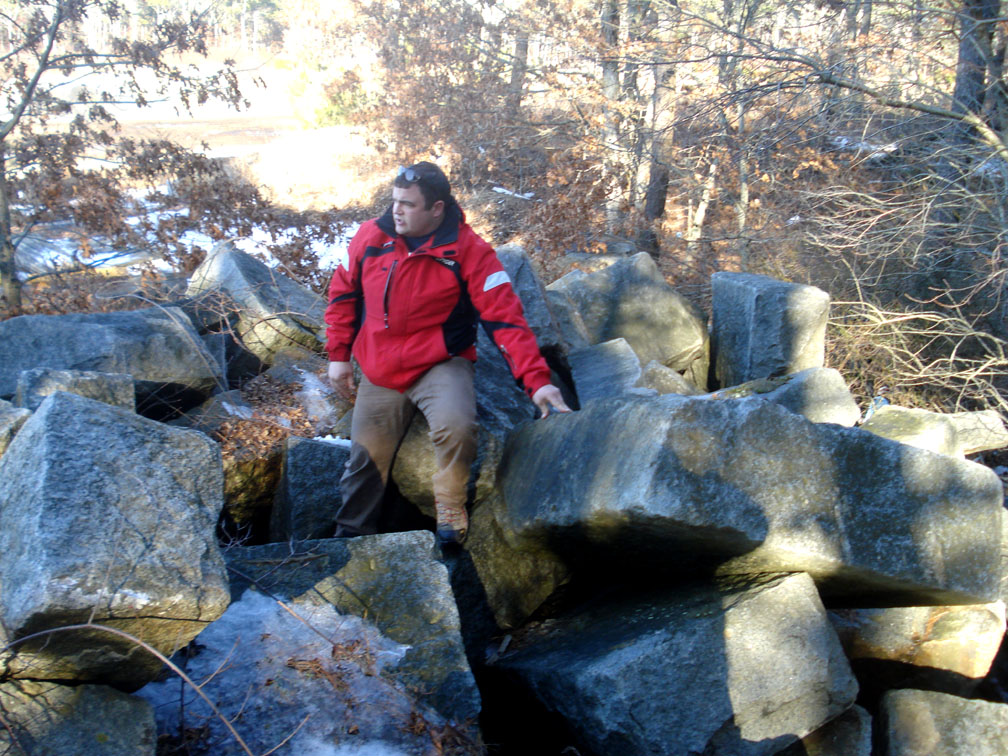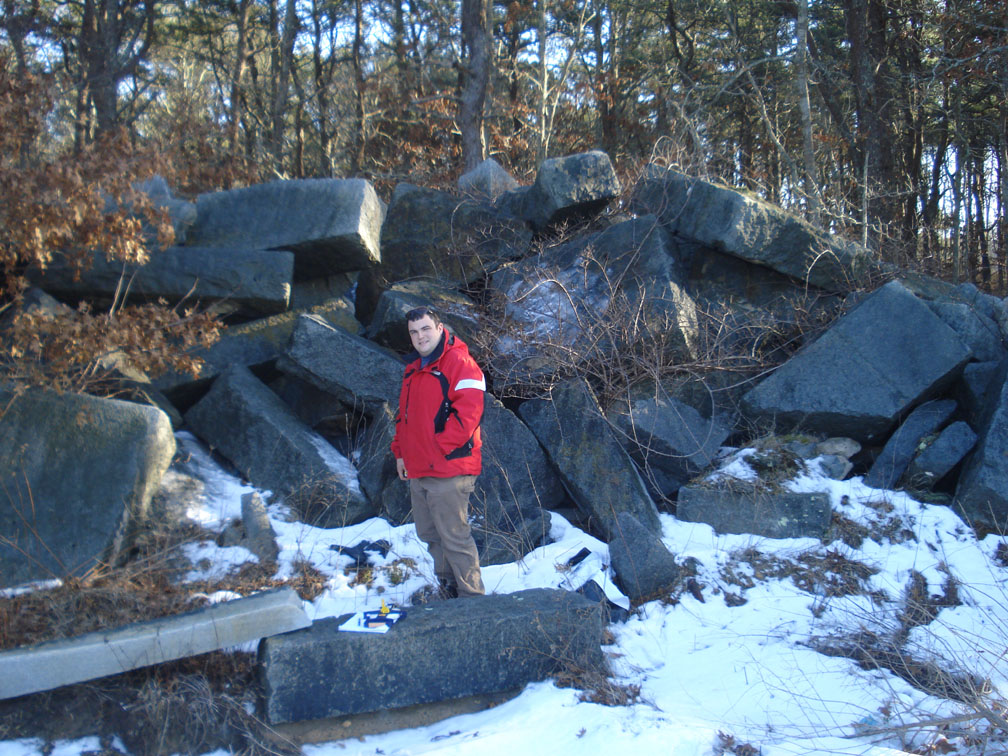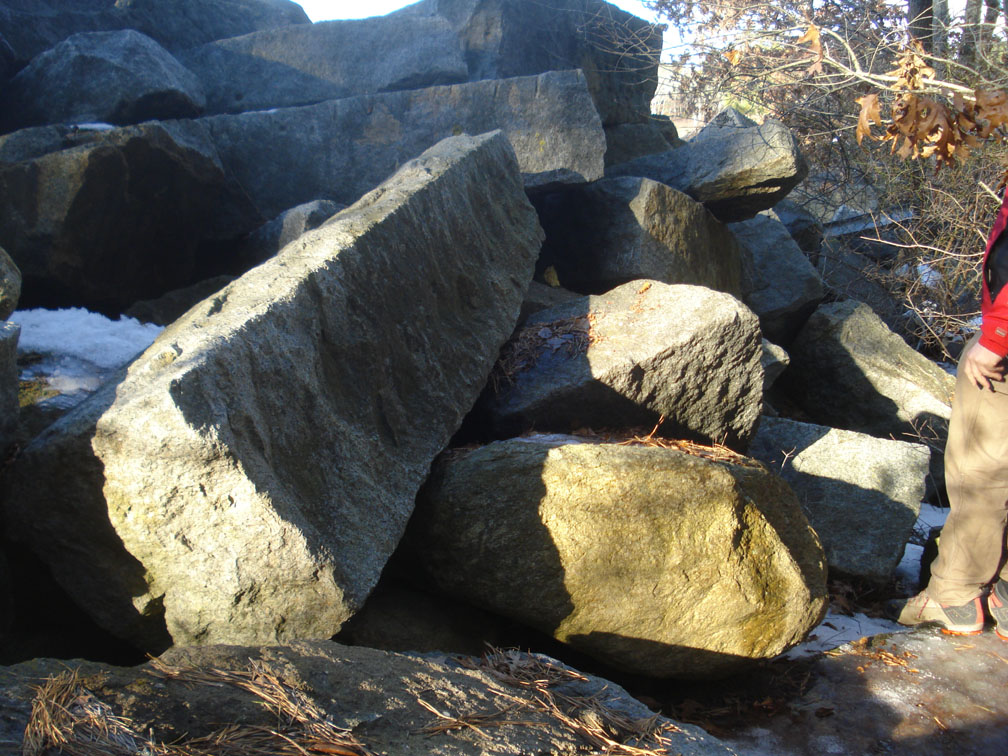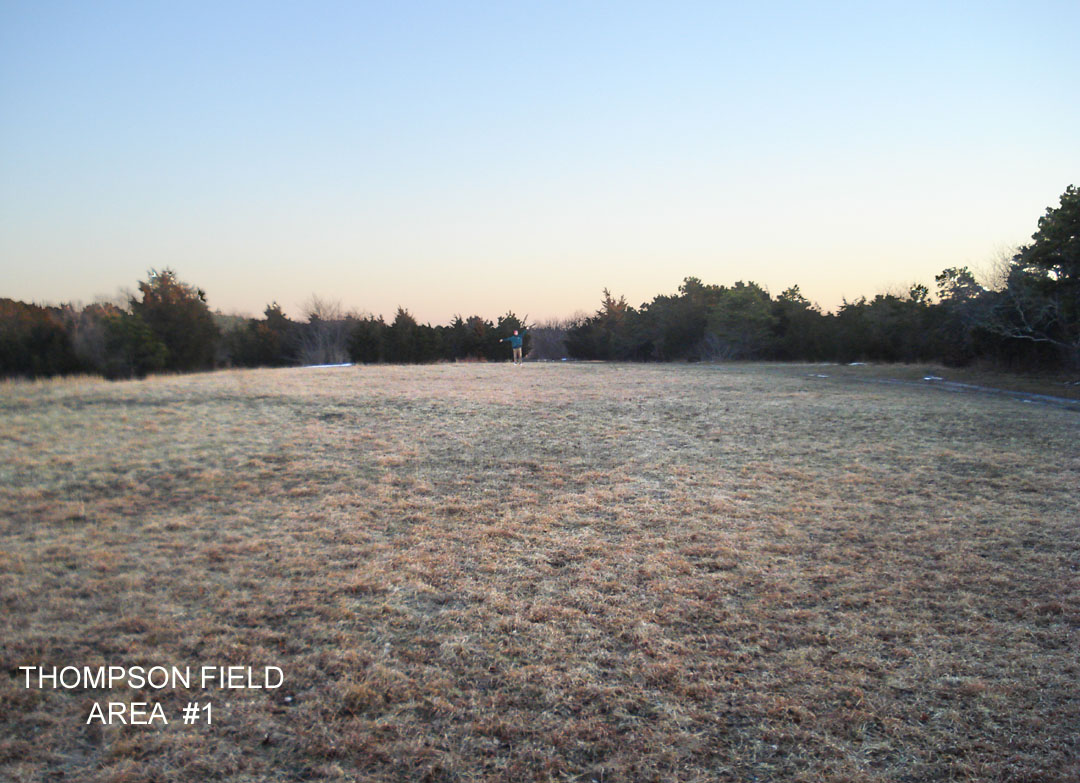 At a total of 223 acres, Thompson’s Field Conservation Area and the WaterDistrict Land contribute significantly to the Wildland Urban Interface within the Harwichlandscape.
At a total of 223 acres, Thompson’s Field Conservation Area and the WaterDistrict Land contribute significantly to the Wildland Urban Interface within the Harwichlandscape.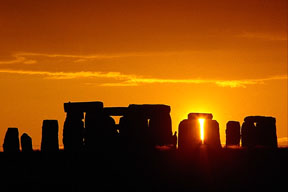
If you were to go on to Google Earth and search for 'Stonehenge', you would find the largest number of individual pictures ever devoted to a single artifact in it's entire system taken by random visitors to this ancient monument. This says a lot to the extraordinary popularity of this megalithic monument that lies on the Salisbury Plain in Wiltshire, England. It is this same attraction that causes thousand of tourists annually to visit the site, that we believe will make an authentic model of the large stone structure a popular destination point for visitors to Harwich, Massachusetts.
Thompson’s Field Conservation Area and adjacent Water District land has passive recreationaluses that include dog walking, general walking, and nature observation. The network of trailscontribute to making this open conservation area a pleasant place to walk, observe wildlife, andstudy the natural environments of Cape Cod.
 At a total of 223 acres, Thompson’s Field Conservation Area and the WaterDistrict Land contribute significantly to the Wildland Urban Interface within the Harwichlandscape.
At a total of 223 acres, Thompson’s Field Conservation Area and the WaterDistrict Land contribute significantly to the Wildland Urban Interface within the Harwichlandscape.
Thompson’s Field Conservation Area is managed the Conservation Commission and theAdjacent Water District lands are managed by the Water Department. The site hasmultiple natural resource values, including significant ecological features, recreationalresources, and serves as a water source for Harwich town water. The property is boundto the east by private property, to the west by private residences, to the north by Route 39(Orleans Road), and to the south by Chatham Road. The property is bisected east to westby the Cape Cod Rail Trail.
Recognizing that there is a considerable stash of stones already owned by the Town that could be made available to create a large stone sundial or a model of Stonehenge, Harwich Natural Resources Director Tom Leach believes that Thompson's Field Conservation Area could provide an excellent venue for such a model. The project site would be deep within the property located at one of two open fields, well away (more than 1200') from either parking area, at Route 39 on the north and Chatham Road on the south. The site provides a wide open grass field and natural setting. There is no streetlight interference, no power lines or man made structures within sight adding to the wilderness feeling of the site. It is incredible that the proposed site is considered a "dark spot", astronomically speaking, on theLower Cape.The site is "pure gold" for the whole Cape and the idea, the very "par excellence" for using public lands for a higher educational
The actual source of the cut stones was a dismantled railroad bridge that was located at the Harwich Station of the Old Colony Railroad off Old Main Street. There may be as many as 90 stones in this pile some ranging to pillars 9' tall and 3x3 in girth. Samples of this quarry stone were shipped to Fletcher Granite in Westford, Massachusetts and analyzed by Vic Castellani. Who had this to say " The granite sample you provided is almost certainly from one of the Quincy quarries. Historically there were about a dozen quarries operating in Quincy. There was some minor variations among the stones from the various Quinct quarries and as is typical even within individual quarries. It would not be possible from the sample to readily identify the quarry. None of the Quicy quarries are operating today and many have been filled in". "The stone is what would be described as a coarse grain granite. It would polish up to a dark grey with some black spots. The stone is rather unique among granites in that it contains no mica. It is known as a riebeckite aegirite". "Because it contains no mica it takes a very high polish and weathers very well. In the case of granites that contain mica frost tends to ultimately get behind the mica sheaths and eventually pops them causing divits. These are especially pronounced with those granites that have large mica inclusions". "But in the case of Quincy granite if you look at a one hundred plus year old polished granite tombstone it would look amost new. The Quincy granite also shows a sharp contrast between the polished stone and lettering that might be cut in it. Thus it was a particularly good granite for monuments". "I don't think there has been an operating quarry in Quincy for the last fifty or more years".
Mr. Castellani sent the samples on to another expert Steven Haynes who is the founder
and director of the Maine Granite Museum in Mt Desert, Maine and has the most
complete knowledge and data base of historical granites. Haynes confirmed Mr. Castellani's original
assessment and provided additional detail.
 "The Quincy granite polishes to a very high shine and this is quoted in The Chief
Commercial Granites of Massachusetts, New Hampshire and Rhode Island, the specimen
that you sent polished to a very high shine as shown in the photo attached. There
are 21 quarries in the area of Quincy, the only quarry listed having yellow-brown
is the Gold-leaf quarry. The sample you sent seems to have this characteristic. I
am also attaching the information from the Chief Commercial Granites of
Massachusetts, New Hampshire and Rhode Island on the Gold-leaf quarry. If you need
a photo of the map showing the Quincy quarries let me know and I'll email it to you.
The scan attached is the sample you sent that I have polished and a sample of a
paving block pulled from the streets of Boston, is definitely Quincy granite as I
have other samples that people have
collected from the Hardwick quarry at Quincy and given to me. These all seem to
match nicely".
"The Quincy granite polishes to a very high shine and this is quoted in The Chief
Commercial Granites of Massachusetts, New Hampshire and Rhode Island, the specimen
that you sent polished to a very high shine as shown in the photo attached. There
are 21 quarries in the area of Quincy, the only quarry listed having yellow-brown
is the Gold-leaf quarry. The sample you sent seems to have this characteristic. I
am also attaching the information from the Chief Commercial Granites of
Massachusetts, New Hampshire and Rhode Island on the Gold-leaf quarry. If you need
a photo of the map showing the Quincy quarries let me know and I'll email it to you.
The scan attached is the sample you sent that I have polished and a sample of a
paving block pulled from the streets of Boston, is definitely Quincy granite as I
have other samples that people have
collected from the Hardwick quarry at Quincy and given to me. These all seem to
match nicely".
This entire project was spawned by an e-mail from Dr. Jon Greenberg of the Cape Cod Astronomical Society to Tom Leach, also the town harbormaster, telling him about a Sunwheel Project at the University of Massachusetts. Tom wrote back, "In 24 hours your email about the UMASS Sundial Project has spawned a deluge here.I remembered some old granite stone that the Town of Harwich hasstored at the disposal area that he'd been eyeballing for a 'Stonehenge'Project in Harwich two years ago".
"I began making contacts about the idea of using Thompson's Field and it's strange that everyone I talk with is onboard". This included Sylvia Laffin who was on the Board of Selectmen at the time of the inception of Thompson Field (1998), and was really the central figure who pulled the original project together after it got rolling. In the meantime he shared the idea with Mike Farber at the Cornerstone Boundary Project. Farber sees a connection forthe North-South boundary in such a project in line with the first such primary meridian line in theNew World.
Planning and exactness are critical to the careful development of what is to come, "I want astronomers onboard all the way for intelligence on this one".Jackie Leach suggested it could be the CCAS 2009 International Year of Astronomy project extraordinaire! Wow! What a thought.Imagine 400 years after Galilleo, we are doing this right here, and proposing to do it right wherethe CCAS got its start in Thompson's Field.
 Some people would say that advanced astronomical astronomy was practiced at Stonehenge. But, it is not likely that ancient observers were able to make advanced predictions such as when lunar and solar eclipses would happen. It is more likely that the astronomical observations made at Stonehenge were of a simple kind carried out for the religious and ritual practices of the people.
Some people would say that advanced astronomical astronomy was practiced at Stonehenge. But, it is not likely that ancient observers were able to make advanced predictions such as when lunar and solar eclipses would happen. It is more likely that the astronomical observations made at Stonehenge were of a simple kind carried out for the religious and ritual practices of the people.
Stonehenge does exhibit alignments with the Sun and the Moon. In fact, the main axis of the monument faces the horizon where the Sun rises midsummer morning, the longest day of the year. But the axis really only lines up roughly. The Sun actually rises to the left of the Heel Stone (the marker for the axis). And because of the Earth's precession, 4,000 years ago, the Sun would have risen even farther off the center axis. This failure to REALLY line Stonehenge up demands an explanation if these people were practicing exact astronomy. It is possible that since these people were only using such knowledge for ritual purposes, their standards of accuracy were different from our own.
It is clear that the placement of stones in Stonehenge was planned. This could have been Stone Age brilliance or it could have been just the moderately observant farmer's knowledge of the sky. Because we haven't found any written records from its makers, we just don't know!
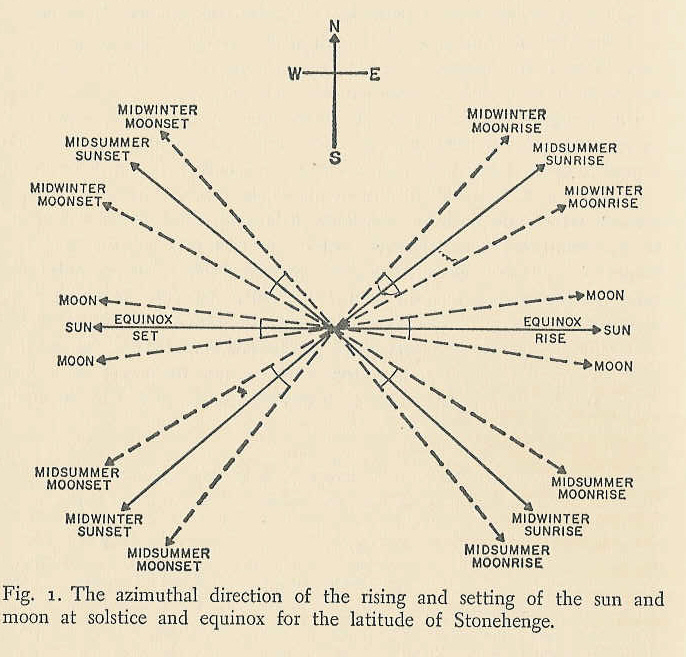 Gary Derman, President of CCAS weighs in "Of course, if you really wanted to make a Stonehenge, we are about 600 milestoo far South to have its symmetrical shape. But it will still do the job,even if it is not quite symetrical (I have the book - Stonehenge Decoded).The optimum latitude is 51°17'." This is exactly why we need our team of astronomers advising this project.Michael Farber at Cornerstone believes the site deserves consideration for a grand scale observatory--oldstyle!"The tent is so big-- ringleader--it's for you to command the elephants--Imean monoliths!"He spoke with his brother Peter earlier and he's onboard "as to the idea ofsimplicity and size--a majestic natural setting of massive stones at peacewith the earth"."Thinking design, there might be perhaps as many as 32 to reflect the 32point compass that came with western civilization to the New World. Or, ifyou took out the 22.5 degree points, you could get it down to as few as 8stones".I'd rather have 8 huge monoliths you have to look up, than 32 dwarfs".
Gary Derman, President of CCAS weighs in "Of course, if you really wanted to make a Stonehenge, we are about 600 milestoo far South to have its symmetrical shape. But it will still do the job,even if it is not quite symetrical (I have the book - Stonehenge Decoded).The optimum latitude is 51°17'." This is exactly why we need our team of astronomers advising this project.Michael Farber at Cornerstone believes the site deserves consideration for a grand scale observatory--oldstyle!"The tent is so big-- ringleader--it's for you to command the elephants--Imean monoliths!"He spoke with his brother Peter earlier and he's onboard "as to the idea ofsimplicity and size--a majestic natural setting of massive stones at peacewith the earth"."Thinking design, there might be perhaps as many as 32 to reflect the 32point compass that came with western civilization to the New World. Or, ifyou took out the 22.5 degree points, you could get it down to as few as 8stones".I'd rather have 8 huge monoliths you have to look up, than 32 dwarfs".
The proposed site is so close to the 70 degree meridian. It will still help in orienting the design planning. Farber states "I do share with the missive that we're also not on Stonehenge's parallel. However, 42° is close by to the north though--our I-42° interstate from the Old to the New World. Some of you masters of the universe need to calculate the summer solstice position. It looks to me from observations over the past 3 years that the sun rises directly to the east of Rock Harbor, in Orleans, and shoots westward along the bayside coast--again a bit to the north of the site but definitely something to work with in orientation and alignment".
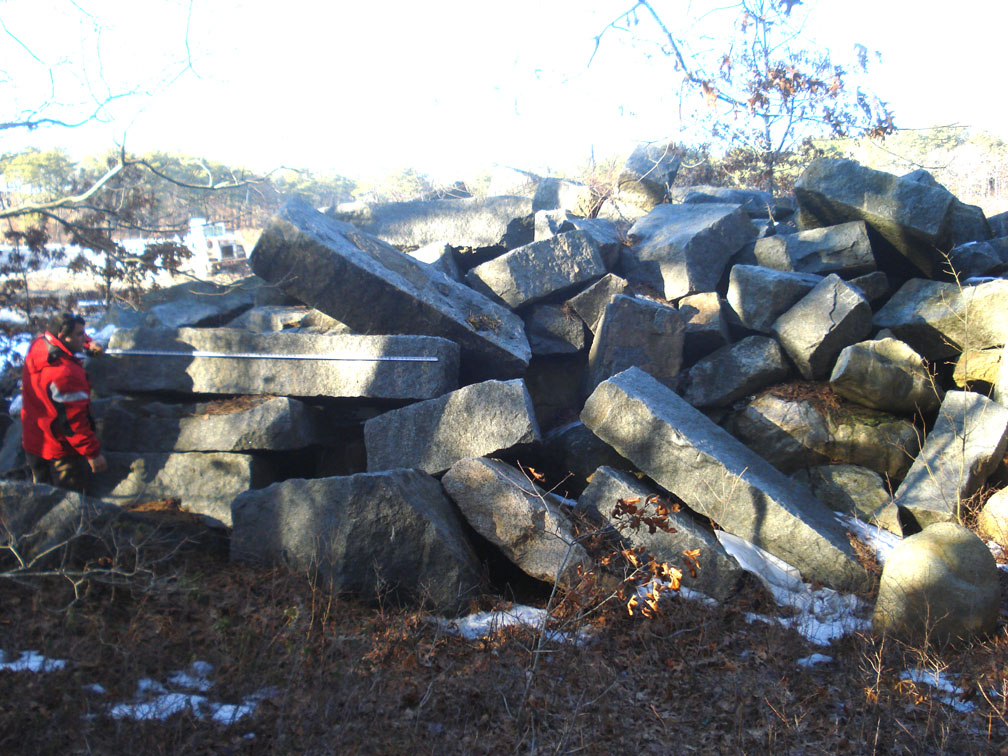 The Harwich DPW Director Lincoln Hooper thinks releasing the great stones for the project "would be as easy, as getting the Selectmen to vote for it the same way they are considered surplus material". He tried to get them to vote to gift the stones to theTown of Wellfleet to no avail a few years ago to help them with the harbor project. Maybe giving them a good home right here in Harwich will be more acceptable to the Town Fathers. Hooper says "It is a huge pile that I would like to find a use for. Let me know how Ican help". Just as important, Conservation agent John Chatham believes that the project may be a good one, worthy of discussion by the Conservation Commission. It comes at a time when the dog walking and trail use are under scrutiny. Lady Brett from West Harwich is considering presenting a proposal for a dog walk area near Route 39 end of the Thompson's Field in response to dog safety. She believes the stone sundial project is an exciting worthy project for the back area which is well hidden from the street.
The Harwich DPW Director Lincoln Hooper thinks releasing the great stones for the project "would be as easy, as getting the Selectmen to vote for it the same way they are considered surplus material". He tried to get them to vote to gift the stones to theTown of Wellfleet to no avail a few years ago to help them with the harbor project. Maybe giving them a good home right here in Harwich will be more acceptable to the Town Fathers. Hooper says "It is a huge pile that I would like to find a use for. Let me know how Ican help". Just as important, Conservation agent John Chatham believes that the project may be a good one, worthy of discussion by the Conservation Commission. It comes at a time when the dog walking and trail use are under scrutiny. Lady Brett from West Harwich is considering presenting a proposal for a dog walk area near Route 39 end of the Thompson's Field in response to dog safety. She believes the stone sundial project is an exciting worthy project for the back area which is well hidden from the street.
Our Town Planner Elizabeth Hude express interest in our Stonehenge concept as did Sandy Davidson executive director of the local Chamber of Commerce. Hude believes our Harwich Conservation Agent, John Chatham, needs to be involved as soon as possible in the working group. He is workingon the Town's Open Space plan and will be a key player if this is to move forward.
The idea of stones a rod in length is out with these quarried stones that we might have, as these arein the 8' range. Still sizeable, if we plant them two feet into the groundthat leaves tops at head high. The model suddenly becomes a miniature ofStonehenge. Still the project becomes a very cool and interesting idea maybe better than the original? Perhaps better as the field of view has certain limitations and this might play better in the setting. The opportunity to make this as authentic as the original Stonehenge using the size and number of rocks we have is very real. Iwas thinking the watch circle should be cut from 150' to 100' in diameter.
One of the secrets of life is to make stepping stones out of stumbling blocks. It is obvious that if this project is to pull together it will require a huge volunteer base of folks interested in lending a hand. However, it is it's raw simplicity which will draw volunteers to be part of what is to come. Sighting, planning, funding, building are all points that come to mind.
Additions to this site will be added as needed. Ideas and volunteers to plan, study and build welcome. Contact Tom Leach telephone 508-237-9291
Megalithic Sundials and Astronomical Analyses . | . |
Thompson's Field Conservation Area Fire Safety Plan UMASS Sundial story (Cape Cod Times 1997) . | View Harwich Stonehenge Guest Blog . |
